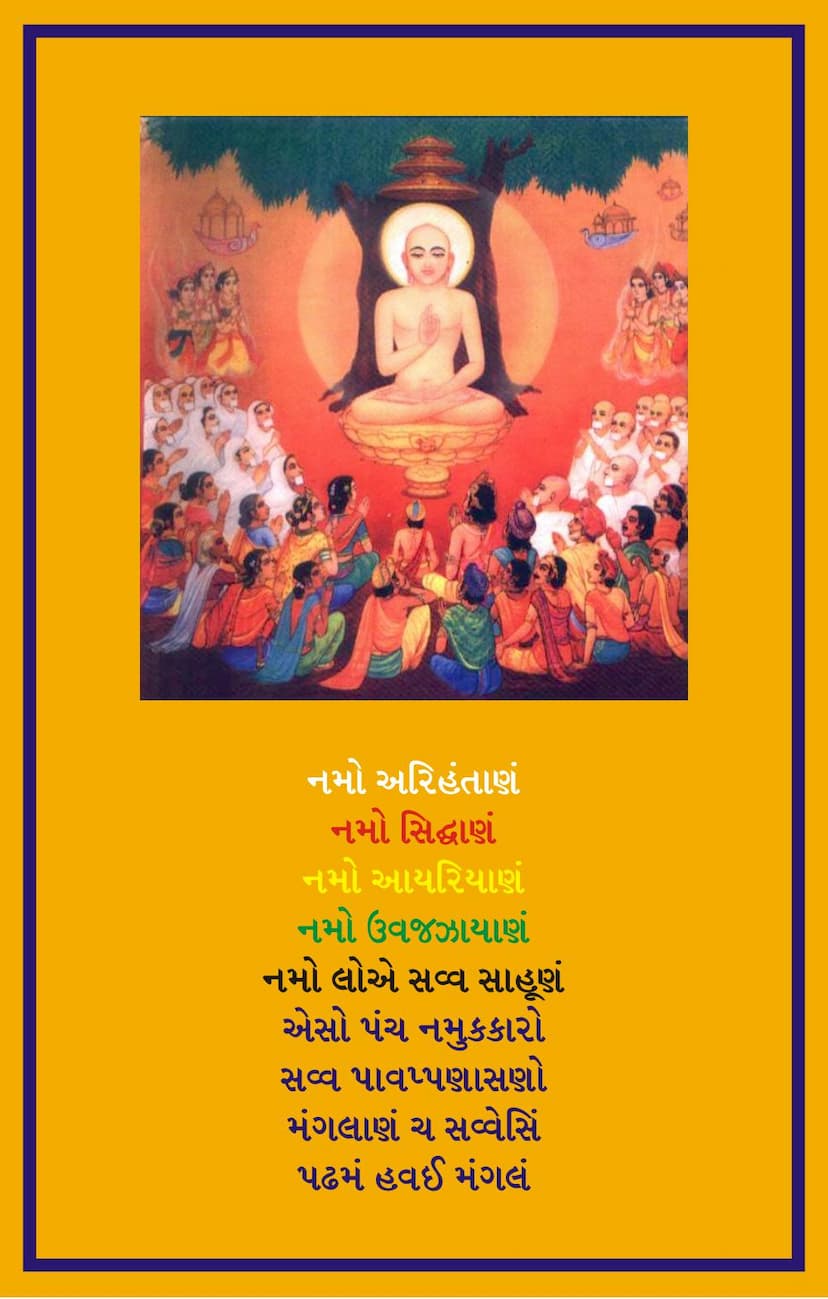Agam 07 Ang 07 Upashak Dashang Sutra Sthanakvasi
Added to library: September 1, 2025

Summary
This Jain text, the Upasak Dashang Sutra (also known as the Dashvaikalik Sutra in some contexts, though this appears to be a commentary on the Upasak Dashang Sutra), authored by Ghasilal Maharaj, published by A B Shwetambar Sthanakvasi Jain Shastroddhar Samiti, is a profound discourse on the path of the householder (Upasak) in Jainism. The provided excerpt details the initial pages and a table of contents, focusing on the structure of Jain Agamas and the extensive classification of their texts, along with detailed guidelines for the practice of 'Swadhyaya' (self-study or scripture study).
Here's a breakdown of the comprehensive summary based on the provided text:
1. Title and Author:
- Book Title: Agam 07 Ang 07 Upashak Dashang Sutra Sthanakvasi
- Author: Ghasilal Maharaj
- Publisher: A B Shwetambar Sthanakvasi Jain Shastroddhar Samiti
- Catalog Link: https://jainqq.org/explore/006335/1
2. Core Themes and Structure (Implied by Table of Contents and Initial Pages):
The text is presented as a commentary (Vyakhyanam) by Ghasilal Maharaj on the Upasak Dashang Sutra. The title itself indicates its focus on the "Dashang" (ten aspects or stages) of the "Upasak" (householder or lay follower) and its adherence to the Sthanakvasi tradition within Shwetambar Jainism.
The initial pages reveal a strong emphasis on Mangalacharan (auspicious invocation), including the Panch Namaskara Mantra, which is considered the paramount auspiciousness.
The table of contents, which spans several pages, demonstrates a highly structured and systematic approach to understanding Jain scriptures and principles. It outlines:
- Understanding of Anuyog: The text elaborates on the meaning of the term "Anuyog" and the four primary Anuyogs in Jainism:
- Charanakaran Anuyog: Pertaining to conduct, practices, and the progression through the 14 stages of spiritual development (Guṇasthānas).
- Dharmakatha Anuyog: The repository of religious narratives, stories, and discourses that illustrate Jain teachings.
- Ganita Anuyog: Mathematical and astronomical aspects within Jain philosophy.
- Dravya Anuyog: The study of fundamental Jain substances (dravyas) and their qualities.
- Classification of Agam Sutras: A detailed breakdown of the Jain Agamas into Anga Sutras (11), Upanga Sutras (12), Moola Sutras (4), Cheda Sutras (4), and the Aavashyak Sutra (1), totaling 32 primary texts.
- Detailed Content of Upasak Dashang Sutra: The table of contents then lists the various chapters and subjects covered within the Upasak Dashang Sutra itself. This includes:
- Aangar Dharma (Householder's Dharma)
- Descriptions of Champa Nagari.
- Discussions on Mudharma and Jambuswami.
- Detailed accounts of lay followers like Ananda Gothapati (Shravaka), Shivananda, Kamdev, Chulani-pita, Mahashatak, Revati, and others.
- The ethical vows (Vratas) of a householder, including Ahimsa, Satya, Asteya, Brahmacharya, Parigraha, and their specific transgressions (Aticharas).
- Concepts like Naya, Syadvada, and Saptabhangi.
- Discussions on deities (Deva), gurus, and the nature of Dharma.
3. Swadhyaya Guidelines (Pages 6-10):
A significant portion of the initial pages is dedicated to detailed instructions on Swadhyaya (scripture study) and Aswadhyaya (times or circumstances when Swadhyaya should not be performed). These guidelines are meticulous and cover:
- Timing: Specific times of day and night for study, avoiding certain periods like twilight, noon, and midnight.
- Personal Circumstances: Restrictions for women during their monthly cycle.
- Environmental Factors (Aswadhyaya): A comprehensive list of 32 specific conditions that necessitate abstaining from study, categorized into:
- Aakash Sambandhi (Celestial/Atmospheric): 10 conditions including meteor showers (Ulkapāt), atmospheric fires (Digdāha), thunderous clouds (Garjārava), celestial sounds (Nirghāta), lightning (Vidyut), specific lunar phases on certain days (Yūpak), flashes of light (Yakshādīpta), and various types of fog or dust storms (Dhūmikā Krishṇa, Mahikā Shveta, Rajodghāt).
- Audārika Sharīr Sambandhi (Physical Body Related): 10 conditions including the visibility of bones, flesh, or blood that haven't been fully cremated or washed away; broken eggs; visible excreta or foul odors; proximity to a cremation ground (Smashaan); lunar or solar eclipses; royal conflicts (Rājavyudgata); royal deaths and the subsequent period before a new appointment (Patana); and the presence of a dead body within or near the dwelling (Audārika Sharīr).
- Festivals and Specific Days: Four major festivals and the four days following them (total 8 days) are listed as times of Aswadhyaya.
- Time of Day: Specific times around sunrise, sunset, noon, and midnight are also identified for Aswadhyaya.
4. Commentary Style:
The text includes a detailed commentary, as indicated by titles like "Agam Sanjeevani Tika" and "Ghasilal Maharaj Krut Vyakhya Sahit." This commentary aims to elucidate the subtle meanings and practical applications of the sutras. The inclusion of Hindi and Gujarati translations further suggests an effort to make the text accessible to a wider audience.
In essence, this text is a foundational Jain scripture for lay followers, meticulously detailing the householder's path to spiritual progress, emphasizing ethical conduct, scriptural study, and the avoidance of actions that impede spiritual progress. The detailed nature of the Aswadhyaya rules highlights the Jain emphasis on purity and mindfulness in all aspects of life, including religious study.